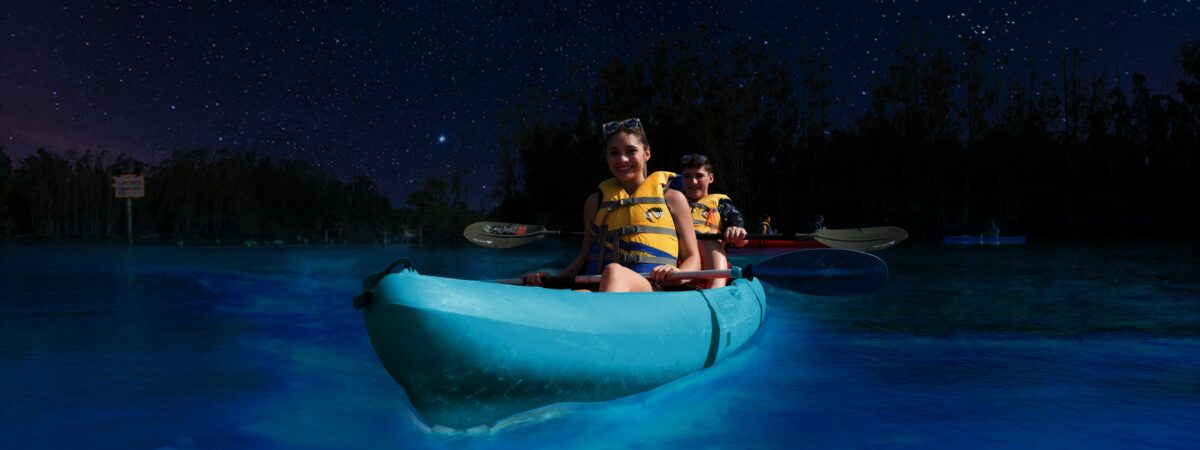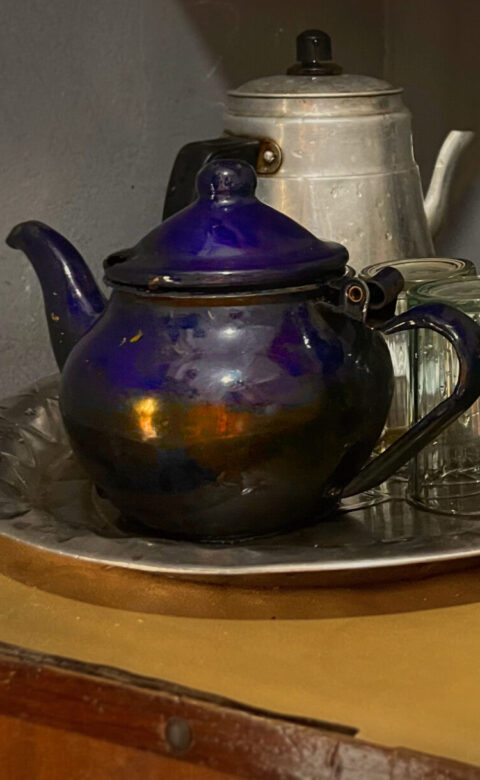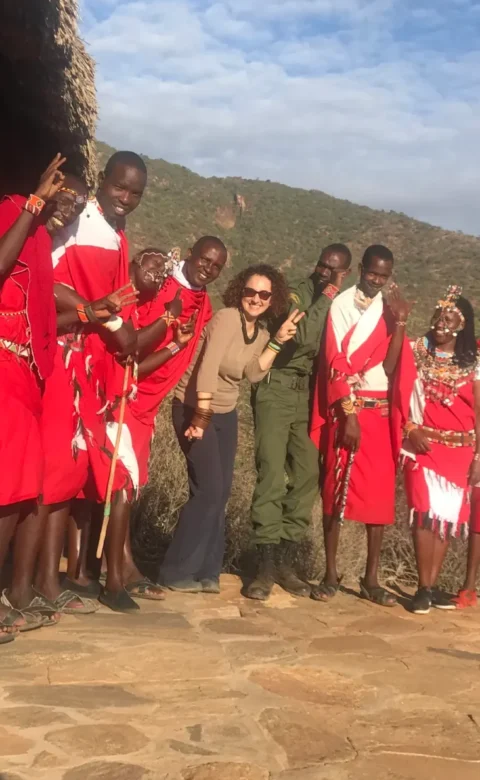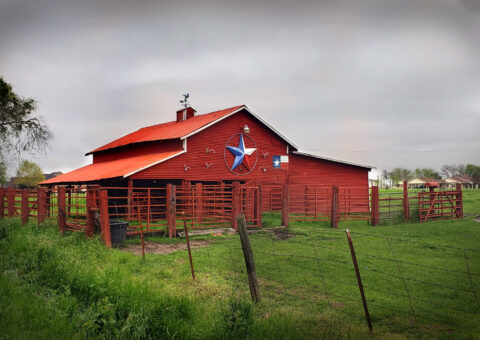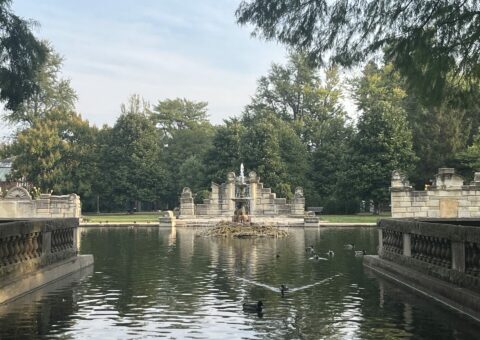One of the most biologically diverse lagoon systems in the United States supports a delicate habitat threatened by pollution. Kayaking the Indian River Lagoon, tourists learn about the fragile ecosystem while gliding through the “sea of stars” at night.
Central Florida’s east coast is best known as the home of America’s spaceport, drawing hundreds of thousands of tourists every year to marvel as rockets lift off from Cape Canaveral. But a quieter, if no less glittering, show happens each summer in the coastal lagoons off Florida’s 72-mile Space Coast.
As the sunlight fades on the water, the keen observer may notice a glimmer in the depths, brightening the darker it gets. This bioluminescence is noteworthy here for its reliability. Visit between May and September, and you’re almost guaranteed some action.
But the ecosystem supporting bioluminescent and other marine life is a fragile one. Too much algae yields blooms that can block sunlight and create dead zones. Too little, and there’s not enough oxygen.
The best way to explore these waters sustainably? By kayak, with a conservationist leading the way, as you learn about this precious habitat — and how to preserve it — while gliding through a sea of stars.
Fire in the Water
About 50 miles east of Orlando is a very different Florida, one that predates theme parks and spring break revelry. The Merritt Island National Wildlife Refuge, spanning 140,000 acres just north of Cape Canaveral, is home to more than a thousand species of plants and animals, many threatened or endangered.
Here, mangroves crowd the shores and wading birds dart for fish among the grass flats. Three brackish lagoons — Indian River, Mosquito Lagoon, and Banana River — form the vibrant Indian River Lagoon System, one of the most biologically diverse estuaries in the world and a breeding ground for bioluminescent life, especially single-celled dinoflagellates.
“The dinoflagellates here, Pyrodinium bahamense, are the same found in Puerto Rico, world-famous for its bioluminescence,” says Edith Widder, a local marine biologist who has studied this natural phenomenon for the past 45 years. “I’ve talked to old-time fishermen farther south who’ve described it as fire in the water, though it’s not as extensive as it once was.”
Paddling the Lagoons
For those seeking bioluminescence, the 150 miles of the Indian River Lagoon are paradise. The Merritt Island National Wildlife Refuge, in particular, is ideal as it’s undisturbed by light pollution. Widder recommends taking a kayak tour during a dark moon — the less light from other sources, the better.
As you push off from the shore, following your guide into the still water, there’s a quiet expectancy in the air. Then the first glow, faint and blue-white, appears. Curiously, the dinoflagellates are responsive. When you paddle through the water, the disturbance sparks luminescent ripples.
“It’s unbelievable that something so small can create something so magical,” says Ariana Lutsic, a scientist at the Kennedy Space Center who moonlights as a tour guide at A Day Away Kayak Tours. “Its beauty is an experience; one many people feel changed from afterwards.”
On the tour, Lutsic and her fellow guides tell the story of this special place: how there are millions of bioluminescent dinoflagellates here; how mangrove forests are nurseries for fish, sea turtles, and migratory birds as well as natural filtration systems; how the seagrass is dying due to pollution, causing a chain reaction we don’t yet fully understand.
For Future Generations
The health of the Indian River Lagoon has declined dramatically, largely due to nutrient run-off from lawns and contaminants from septic systems. As a result, manatee deaths have risen — “record-breaking last year,” Widder notes — along with toxic algae blooms that affect the health of plants and animals, including humans.
“Change starts with awareness,” says Widder, who founded the Ocean Research & Conservation Association with this goal in mind. “It’s educating people on the impact their actions have on aquatic habitats.”
For Lutsic, that’s the most important part of her job. “Ecotourism takes on the responsibility of showing tourists the beauty of Florida’s flora and fauna while also inspiring a change. People can read books or watch a show about how pollution is damaging ecosystems, but when they go out on the water, they are now connected and want to take a more active role in caring for the environment.”
Tourists support an industry that promotes the lagoons’ restoration. Scientists like Widder periodically accompany tour guides to collect samples and monitor the water’s composition so they can better protect it.
“Each tour benefits our lagoon in some way,” Lutsic says. “Whether it is providing information on endangered species, inspiring a future biologist, or even showing policymakers that this area is important for funding and protection. Knowledge truly is power.”
When you visit the Space Coast, it’s easy to get caught up with the glamour of space travel and astronauts. But save at least one summer evening for a journey into underwater galaxies. Dip your hand into the water and watch the shimmering lights radiate from your fingers. Tell someone else what you learned about this fascinating, faltering ecosystem. Perhaps they’ll tell someone, too.

